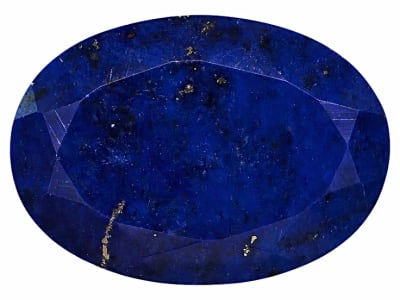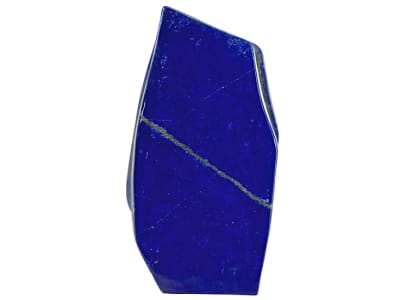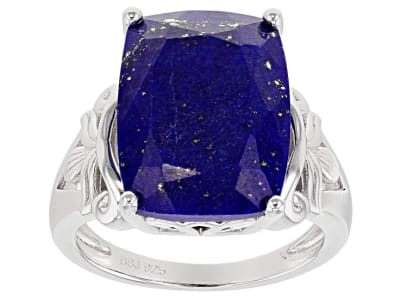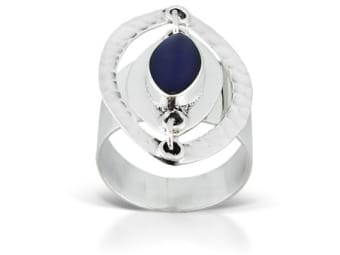Well known throughout the world, lapis lazuli has been prized by numerous civilizations. Lapis lazuli has been used for ornamentation for 6,500 years. It was used to create the pigment ultramarine that was of great importance to Renaissance artists. Lapis lazuli is a rock composed of several minerals. It is a sodium-calcium-aluminum silicate which calcite, lazurite, and pyrite are the main components. The highest-prized material is an intense medium to dark blue color with a small scattering of pyrite and no white veins or spots.
General Information
LWUV: The white calcite areas might fluoresce pink
Lapis Lazuli Colors
-
 Blue
Blue -
 Multi-color
Multi-color
Alternate Names
Lapis
Countries of Origin
Myanmar; Afghanistan; Argentina; Russian Federation; Angola; United States of America; India; Canada; Pakistan; Unknown; Italy; Chile; Serbia; Tajikistan
History
Lapis lazuli is an intensely colored royal blue with golden flecks of pyrite and pure white specks of calcite. It is. In the jewelry trade, its name is usually shortened to lapis. Most often cut into beads or en cabochon, you'll love wearing this glorious blue in necklaces and earrings. Exercise care when wearing lapis rings or bracelets. Lapis is softer than many elements - 5 - 6 on the Mohs scale - so be sure to treat it well. Most gemstones are made of a single mineral. Not lapis. It's a rock composed of several materials, most notably calcite, pyrite and lazurite, although many other minerals are present in minimal amounts. They come together in a stone that can quickly become a favorite.
Care
Lapis is porous. It's often dyed to enhance its beauty. Do not use chemicals or ultrasonic cleaners. Wash in warm water and mild soap; rinse thoroughly and dry with a soft cloth.
More About Lapis Lazuli
Very few gems have as long and storied a history as lapis. Tomb relics of beads, scarabs, and inlaid jewelry date back more than 5,000 years. The ancient Buddhists believed that lapis brought peace of mind and tranquility of soul to the wearer. Considering its rich blue, we can see how they would believe that.
Simulants
Gilson Imitation Lapis
Gilson imitation lapis is a man-made lapis simulant that gives the look of the widely appreciated natural gemstone lapis lazuli. Because this imitation jewel has some ingredients and physical properties not shared with natural lapis, it is considered a simulant, as opposed to synthetic stone.
LWUV: inert



